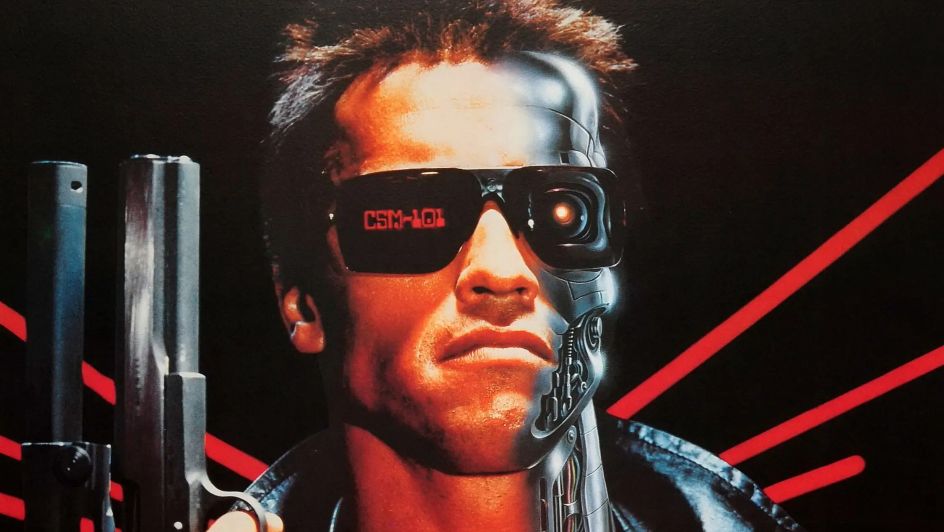#ThrowbackThursday – 26 October

It’s 26 October, and that means it’s time for another edition of Throwback Thursday! Today, we’re looking back at three events that went down on this day in history – take a look:
1881 – The Story of The Gunfight at the O.K. Corral
Western flicks (and books) are made of these: epic gunfights between lawful do-gooders and desperate outlaws on the dusty, gold-sanded frontiers of the Wild West.
Perhaps the most famous of these gunfights took place 142 years ago on 26 October in Tombstone, Arizona, known by historians and western aficionados alike as the “Gunfight at the O.K. Corral”.
Nine participants were involved in the legendary showdown: the Earp brothers – Wyatt, Morgan and Virgil, all lawmen – and their friend Doc Holliday took on the five-man band of desperados consisting of Ike and Billy Clanton, Tom and Frank McLaury, and Billy Claiborne. Both sides had a quarrel with each other that had been simmering for quite some time, with the Earps often clashing with the five men on several occasions over the latter group’s criminal activities.
Ultimately, their conflict saw both sides drawing their guns against each other one afternoon … but NOT at the O.K. Corral (a local livery and horse corral in Allen Street), as the name suggests. In fact, the gunfight took place at a nearby lot in Fremont Street.
At 3PM, the confrontation between the two groups began and ended in an intense 30 seconds. Thirty shots were fired, resulting in the deaths of Billy Clanton and both McLaury brothers. Ike Clanton and Billy Claiborne fled for their lives, ensuring a victory for the Earps and Holliday.
A Tombstone judge later found the lawmen not guilty of the shootings, ruling that they were “fully justified in committing these homicides.” As such, their names – as well as the gunfight that brought them notoriety – have been immortalised in countless pieces of fiction, including the 1957 Western classic, “Gunfight at the O.K. Corral”. Doubtlessly, it has also served as inspiration for the countless showdowns we see in hundreds of depictions of the Old West.
1952 – Remembering Hattie McDaniel
Today, we remember American actress Hattie McDaniel, who passed away on this day 71 years ago.
Born in Wichita, Kansas in 1895 and raised in Denver, Colorado, McDaniel began her career as a performer in travelling minstrel shows. She also landed the role of Hi-Hat Hattie, a character on the Los Angeles-based radio show, “The Optimistic Do-Nuts”. However, the Great Depression that dominated the ‘30s saw her working as a bathroom attendant at a club, where she also moonlighted as a singer.
Over the next few years, McDaniel landed bit parts in films – mainly as maids – but it wasn’t until she landed the part of domestic servant Mammy in the 1939 classic starring Vivian Leigh and Clark Gable, “Gone with the Wind”, that she earned herself nationwide recognition … and condescension.
While she made history by becoming the first African American woman to win an Academy Award (specifically, the award for Best Supporting Actress) for her role as Mammy, McDaniel was still discriminated against due to the colour of her skin. She was unable to attend the premiere of “Gone with the Wind” at a whites-only theatre, plus she was seated separately from her co-stars at the Oscars. The rest of her filmography saw her being typecast as a domestic servant, which earned her ire from the African American community, who were unhappy about the way their ilk were pushed into stereotypical roles across all media types.
Nevertheless, McDaniel soldiered on. She even organised entertainment events for soldiers during World War II, and was a member/supporter of various organisations and causes such as the Hollywood Victory Committee, the American Women’s Voluntary Services and the Red Cross.
On 26 October 1952, McDaniel passed away at the age of 59 due to breast cancer. She was ultimately buried in Rosedale Cemetery in Los Angeles, California – prior to her death, she expressed her wish to be buried at Hollywood Cemetery, but it had a whites-only policy at the time.
Today, McDaniel is seen as a figure defining success and controversy in equal measure. While some saw her as pushing the black agenda backwards, others viewed her as one who managed to break through the racial barrier to become the historical icon she is today.
1984 – Here Comes The Terminator
It’s one of the most famous action movies of all time, kickstarting a film franchise both revered and reviled by fans and critics alike – yes, “The Terminator” was released on this day in 1984!
Directed and co-written by James Cameron, the plot is as follows: in the year 2029, the last shreds of humankind wage resistance against Skynet, an artificial intelligence hive mind with an army of machines. One man, John Connor, will successfully crush Skynet’s rule – to prevent this, Skynet sends a cybernetic assassin dubbed “the Terminator” (played by Arnold Scwarzenegger) to the year 1984 to kill Connor’s mother, Sarah (played by Linda Hamilton), so as order to prevent him from being born. In response, Connor sends back a soldier named Kyle Reese to protect Sarah.
The low-budget flick (costing $6.5 million, to be precise) was released on 26 October 1984 in US cinemas, with the expectation that it would flop. To everyone’s surprise, it grossed more than $78 million at the box office, plus it garnered much praise from critics and viewers.
Observe this 1984 review, courtesy of “The Hollywood Reporter”: “No doubt about it: Arnold Schwarzenegger was born to play ‘The Terminator’. In this nail-biting Orion sci-fi adventure from Hemdale, the beefy ‘Conan’ star, cast in his first villainous role, dishes out destruction with a fiendish relish certain to neutralise box-office competition. The havoc makes for a genuine steel metal trap of a movie that may very well be the best picture of its kind since ‘The Road Warrior.’
“Cameron is ably abetted by Adam Greenberg’s crisp, incisive camerawork; Mark Goldblatt’s fine-tooled editing, which discreetly cuts away from most of the bloodshed, and Brad Fidel’s pulsatingly persuasive score. The futuristic landscapes are impressively sketched by the Fantasy II visual effects group, and Stan Winston provides stop-motion magic that recalls the best of Ray Harryhausen … ‘Terminator II’, where are you?”
Don’t worry, ol’ Terminator will be back (pun totally intended), albeit only seven years later when the beloved sequel was released, but that’s a story for another time!
Image Credit: Source





















